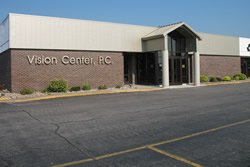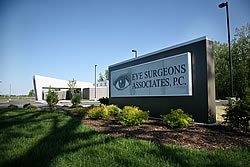LASIK with the WaveLight® Refractive Suite
ESA uses the WaveLight Refractive Suite technology to perform LASIK. This state-of-the-art system is the world’s fastest and most precise. More procedures are done on the WaveLight Refractive Suite than all other technologies combined.1
It’s designed to deliver:2
- Advanced treatments
- Great accuracy
- Proven reliability
- Excellent outcomes
The WaveLight Refractive Suite brings together two advanced lasers in one combined system. The Wavelight FS200 femtosecond laser is the fastest of its kind, creating a precise and bladeless LASIK flap in as little as 6 seconds. The improved speed leads to a more comfortable experience for the patient.
The WaveLight EX500 excimer laser performs wavefront-optimized corrections that maintain the natural shape of the cornea, reducing glare and halos. The EX500 delivers the fastest ablation time available of approximately 1.4 seconds per diopter. This laser also includes an advanced eye-tracking system to improve patient safety.
The Wavelight FS200 and EX500 lasers comprise a single refractive suite, linked by a computer network and a swiveling patient bed. The computer network allows for seamless data transfer and increased efficiency and safety. The swiveling patient bed allows the patient to undergo the entire procedure without having to move from one laser to the next, making for a smooth and comfortable experience on the day of surgery.
IMPORTANT PRODUCT INFORMATION
WaveLight® Excimer Laser Systems
CAUTION: Federal (U.S.) law restricts the WaveLight® Excimer Laser Systems to sale by or on the order of a physician.




